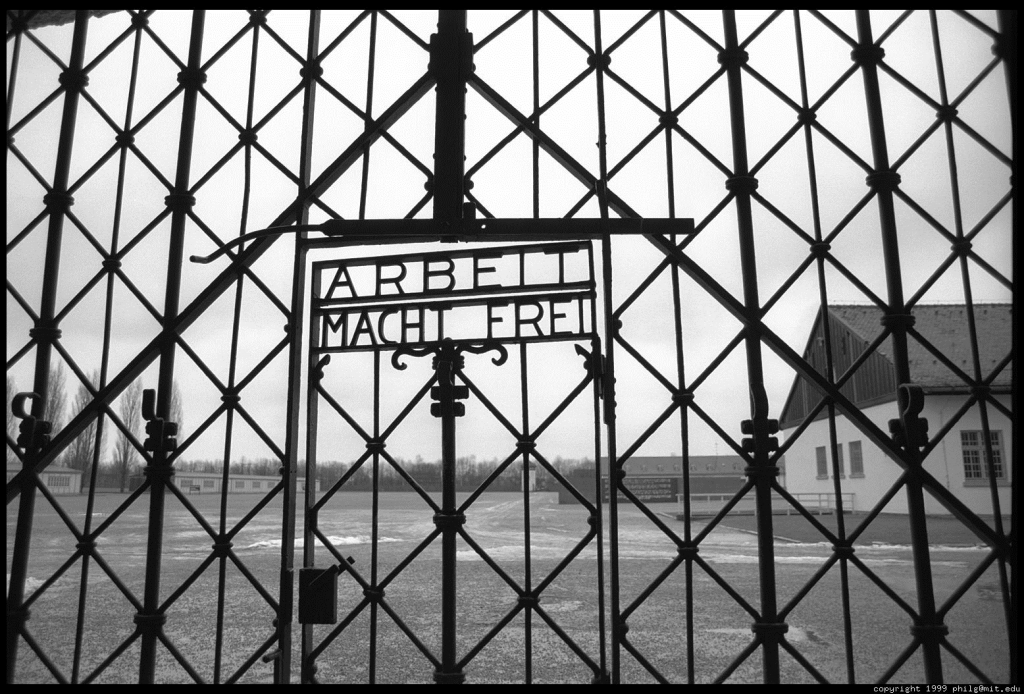Dachau, Germany. Not far from Munich. The town is quaint, with a bit of an artist and shopkeeper’s feel to it.
That is, if you can forget the Holocaust.

Dachau (pronounced DOCK-ow) was the site of the first “concentration camp” in the Nazi regiment. In 1933, Adolf Hitler and the Nazis opened the camp to house people deemed a threat to their rule. At first, this label extended to political dissidents, including Communists. Within a few years, the label broadened to the horrific scale that most of us know.
I traveled to Dachau a few years back. Prior to that my only physical exposure to the Holocaust and the totalitarianism of the Nazis was at the National Holocaust Museum in Washington DC.
When I walked up to the site at Dachau, the memory of the Washington DC museum was uppermost in my mind. If you haven’t been to the Holocaust site in our nation’s capital, go there. Just be prepared to come out drained. Don’t expect to go light-heartedly to your next stop in Washington.
The museum in DC fills you with sensations. From photos that will haunt your dreams to smells of rubber shoes to scenes of discarded leather suitcases—all set against a backdrop of gray steel—your senses are assaulted, overloaded, hounded. The national museum is one of the most memorable I’ve ever visited in terms of using your entire sensory capability as a channel to memory-making.
So, that’s what I had in my head when I got to Dachau.
And I was immediately disappointed.
The prisoner barracks are gone. Only the foundations, leveled to the ground, are left. Most installations on the site no longer stand. The facility that serves as a museum is nothing but flat words on flat signs.
It’s almost as if it’s designed not to be remembered.
The verbiage of the museum displays go to great lengths to show that the camp was part of a secret or semi-secret effort of a thin group of German society, the Nazi leadership and powerbrokers. You can’t help but leave with the impression that it was foisted on an unsuspecting public.
The town of Dachau feels like a stand-in for this view. Townsfolk—you are assured in the wording—didn’t know what was happening inside the camp.
Of course, they were living only a few hundred yards away, and each day prisoners were marched in and out on brutal work details. Also, smells and smoke wafted up from the camp by the war’s end. Can you guess what these black clouds represented? And yet, no one gave it a thought, we’re told.
I did find a particular place at Dachau that cut through everything else. Almost in defiance of the planned visitor experience at this historical place, I stumbled onto the cement train platform where each “inmate” stepped off the train, out of the railcar, and into a world built for their destruction, brutalization, torture, and death. As I recall, that platform was actually outside the formal grounds of the historical site.
That rectangular cement platform hit me hard. Thousands of men, women, and children took their first step at Dachau on that platform. What they knew in their hearts and minds was everything that had happened down to that moment. They were trying to make sense of the upheaval, the chaos, the fear and terror. That first step into a new reality occurred on the cement in front of me. What did they expect would be part of that reality?
Sobering.
Don’t think that I’m adopting some position of superiority here. I’m not. I recognize that there are many events and scenes in American history that were awful and aren’t properly communicated down through the years. I know that. I admit it freely. And I’d be willing to talk more and write more about those episodes.
I’m just being honest in sharing my experience at Dachau. It’s a historical place that you should indeed visit. Just be sure you know a worthy amount about it before you go.







